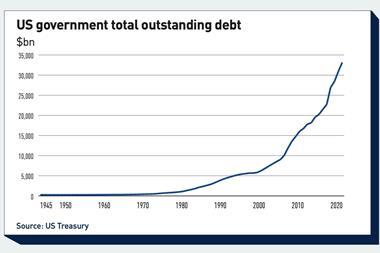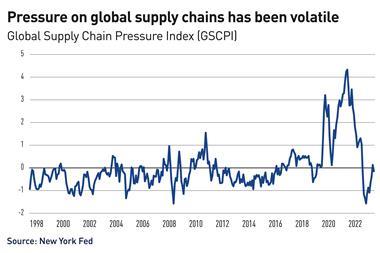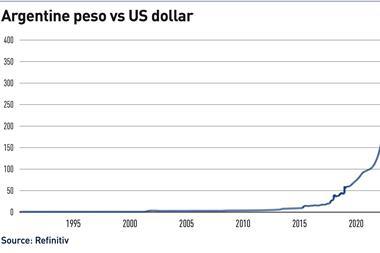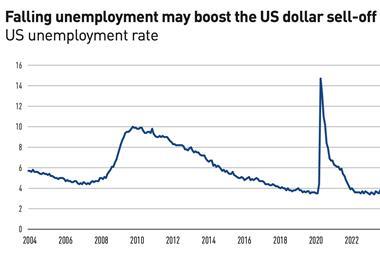In years gone by, whenever we raised the subject of currency management with a group of pension plan trustees, it often evoked a very emotional response. The general feeling was that active currency management is a form of speculation
that should not be permitted by pension plan trustees that have a duty to invest responsibly on behalf of their members.
At least that’s the way things used to be. However attitudes are changing rapidly. While active currency management is still a minority activity among European pension plans, the proportion of plans using some form of active currency management has been increasing steadily over recent years. Since the start of 2004, 22 of Mercer‘s European pension plan clients have initiated searches for active currency managers. Why all the activity when so few plans had considered active currency management until recently? What has changed to bring about this increased level of interest?
Part of the explanation lies in the early history of international investment by pension plans and other large institutional investors. In the 1970s, pension plans with significant allocations to international investments were generally regarded as pioneers. In the UK, pension plans were not allowed to invest more than £1m (e1.4m) internationally until 1979, when this limit was abolished.
When international investment did start to become more common among European pension plans during the 1980s, it tended to be done on an unhedged basis, because this was the simplest way to do it. Various strands of ex-post rationalisation of this approach emerged over time. One was the argument that retaining unhedged foreign currency exposure provided protection against inflation. Another was the argument that it provided diversification benefits. Yet another was the argument that it was impossible to predict exchange rate movements, so there was no point in trying.
None of these arguments were supported by any analysis of historical data. In fact, there was very little historical data to go on back then. By the mid 1980s, the major exchange rates had only been free floating for about a decade or so.
As far as we are aware, the world’s first ever specialist currency management mandate was awarded by the Water Authorities Superannuation Fund (the pension fund for the then nationalised UK water supply industry) to Record Treasury Management (now Record Currency Management) in April 1995. The first Japanese currency overlay mandate was awarded by a Japanese financial institution in 1987 (and was funded in early 1988). The first US mandates were awarded by a corporate pension plan that hired three currency overlay managers in 1988. The first Australian mandates were awarded in 1991, and the first continental European mandate was awarded in 1992.
Back in those early years, the proportion of pension plans using currency overlay managers was tiny. The jury was still out on whether there was any point in trying to add value through active management of foreign exchange exposures. Some studies on the impact of currency hedging within international equity portfolios showed that, on average, international equity managers had been subtracting value rather than adding value through their currency management decisions. Occasionally there would be headlines about corporate treasury departments incurring massive losses through inappropriate foreign exchange transactions. Those managers that had been building up track records of adding value through active currency management were often viewed with suspicion
A landmark in the general change of attitude towards active currency management came in May 1998, when Brian Strange (then of Currency Performance Analytics) published a research paper entitled ‘Do currency overlay managers add value?’. This was widely regarded as the most comprehensive study of the performance of specialist active currency overlay managers ever conducted.
The study found that 121 (80%) of the 152 accounts included in the study had added outperformed since their inception. The average level of outperformance (including those accounts that underperformed) was 1.9% per annum. These results were shown to be highly statistically significant. The empirical evidence in favour of active currency management appeared to be much stronger than any empirical evidence in favour of active equity or bond management.
Initially there was some debate about the credibility of the results of the Strange study. The debate was about the extent to which the sample of accounts included in the study may have been biased towards accounts that outperformed. Since then, however, several follow-up studies that have been carried out on even more comprehensive data sets have arrived at the same basic conclusions.
Mercer’s own data indicates that, on average, currency overlay managers have continued to add value since the period covered by the Strange study, notwithstanding the fact that the number of European currencies available to be managed has been reduced as a result of the introduction of the Euro. The fact that specialist active currency overlay managers have historically added value on average is now well established.
Aside from the empirical evidence, there is also a compelling general reasoning argument as to why active currency managers had been able to add value in the past, and should be able to continue adding value.
In any area of investment management, the scope for active managers to add value depends partly upon the mix of market participants, and partly on the transaction cost hurdle that an active manager needs to overcome to take advantage of any value-adding opportunities that arise.
As far as the mix of market participants is concerned, the key issue is what the mix is between passive price-takers, who will buy or sell whatever they have to buy or sell regardless of the prevailing market price, and active managers, who will choose whether to buy or sell, and in what quantities, depending on the price.
If a market consisted only of passive price-takers, there would be an imbalance between supply (sellers) and demand (buyers). Active managers can profit from this as long as the trading gains that they can make from correcting this imbalance exceed the transaction costs they would incur in doing so. If the market is dominated by passive price-takers, the scope for active managers to make profits can be considerable. If, on the other hand, the market becomes dominated by active managers, and the weight of money seeking to exploit active management opportunities starts to exceed the weight of money that is creating those opportunities, then it becomes much more difficult for active managers to add value. It is often claimed that this is what has occurred in many of the world’s more developed equity markets.
What is unusual about foreign exchange markets is that the proportion of market participants who are essentially passive price-takers is extremely high – well over 90% by some estimates. Firstly, there are unhedged international investors who buy and sell currencies to enable them to consummate their international investment transactions. Secondly, there are corporations who buy and sell currencies so that they can consummate their trade transactions. Thirdly, there are central banks and supranationals who buy and sell currencies in an effort to smooth out fluctuations in bond and currency markets. All three of these groups are essentially passive price-takers, and their presence in the market creates opportunities skilled active currency managers can take advantage of.
The other thing that makes active currency management attractive is that the transaction cost hurdle an active manager needs to overcome in order to add value is relatively low. Buy-sell spreads incurred in foreign exchange transactions tend to be much lower than those incurred in most equity and bond transactions, and there are no commissions or stamp duties to deal with.
As mentioned above, we have been seeing much more interest in active currency management among European pension funds this year than we have seen in the past.
A second trend is that currency overlay managers have been broadening their business from currency overlay management into the management of currency funds. These funds aim to outperform their (typically cash) benchmarks through active management of a portfolio of long and short currency positions. In essence, they are a type of hedge fund, and have become popular investment vehicles for hedge funds of funds.
In some cases pension funds have decided to invest in currency funds, often using futures to transform the cash benchmark into an equity or bond benchmark, as an alternative to hiring an active currency overlay manager. In other cases, pension funds that have decided not to adopt active currency management have ended up with investments in currency funds held via hedge fund of funds vehicles that they have decided to invest in for other reasons.
A third trend we have noticed is that the supply of active currency management services has been increasing steadily. Every year we learn about new providers that have started offering their services, and are seeking an opportunity to present their credentials to us in the hope that they will be recommended to our pension plan clients. Many new providers are bypassing the currency overlay marketplace, and moving straight into setting up their own currency funds. Some of these appear to be of high quality, while some others do not.
As the weight of funds applied to make money from active currency management increases, are we approaching the stage at which the scope to add value is disappearing? Our assessment is that we still have a long way to go to get near this position. The passive price-takers still dominate the market, and are likely to do so for some time to come. We may well see the proportion of those managers who fail to add value through active currency management creeping up over time, and there will always be quarters in which most active currency managers fail to add value. Overall, however, we still view active currency management as one of the most attractive sources of alpha for pension plans.
Bill Muysken is global head of research at Mercer Investment Consulting in London












No comments yet